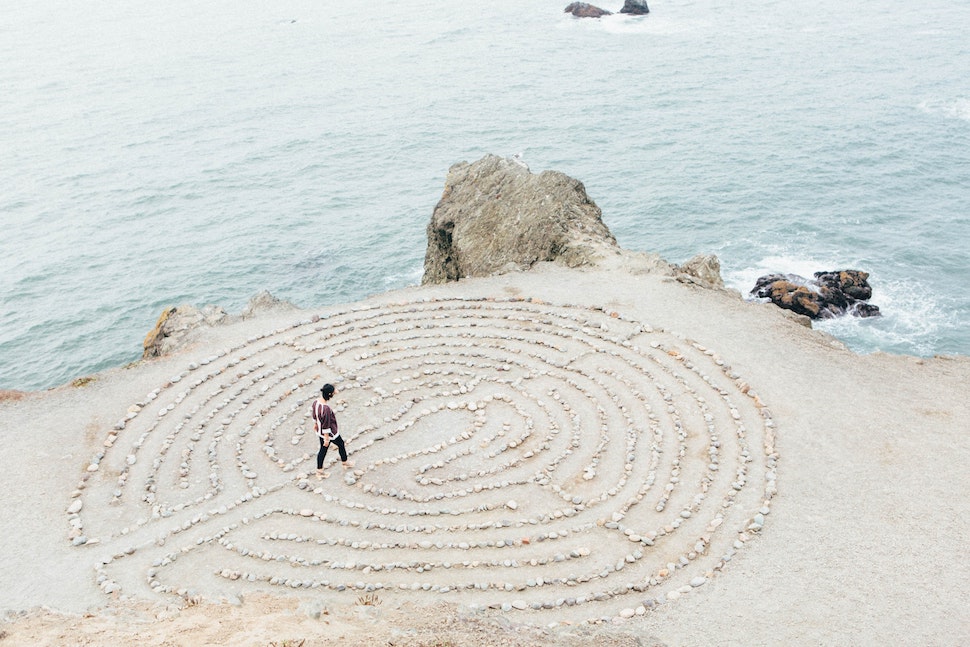
I recently had the pleasure of addressing NorCal Spa Alliance’s first meeting of the New Year. The Northern California regional group launched three years ago, and it is a wonderful alliance full of passionate spa professionals who are in sync and who work really well together. I’m happy to learn that their membership is growing. I shared some thoughts with the group that I’d like to share with all of you. So, here are my musings, in no particular order, on what’s shaping spa now.

Mary Bemis
People want to be in control of their own healthcare. Be that wearables, self-tests, etc. We’re witnessing the collapse of the classic doctor/patient relationship, and people are taking healthcare into their own hands, making their own decisions, and becoming better informed. If you’re choosing your own health practices and you’re conscious of it, then going to a spa for health reasons versus relaxation reasons makes a lot of sense. The quest becomes much more intrinsic: as in I’m doing this for myself.
Self-care is the new necessity. Self-care, the word du jour of 2020, isn’t going away any time soon. It is incredibly important, given the state of the healthcare industry. ISPA’s 2022 Consumer Report showed that 74 percent of spa-goers now cite self-care activities as important.
There’s a glaring disparity between a rapidly aging population and a caregiving population that just can’t keep up—it’s breaking at the seams.Today, there are more people over 65 than have ever been over 65 in the history of the world. People are asking, “Who’s going to take care of me when I’m old?” If you’d like to keep your finger on the pulse of the aging population (and how it may apply to those of you in spa and wellness) Nancy Griffin’s SeniorTrade newslett
“All of this speaks to the importance of spa being an island of calm in the storm.”
The Gallup Global Emotions 2022 Report found that negative emotions reached a new record—we’re in the midst of a global rise of unhappiness and unwellness—here’s one stat in particular that stood out to me: 330 million adults globally go at least two weeks without talking to family or friends. Which leads me to my next stat from ISPA’s 2022 Consumer Report: 80 percent of spa-goers reported that looking after their mental wellbeing is an important part of their daily rituals. And just this past November, the Global Wellness Institute released its impressive Defining Wellness Policy study, reporting that, across countries, for every $844 increase in wellness economy per capita, the average happiness level increases by nearly 7 percent. Furthermore, an increase of $769 in wellness economy per capita is associated with 1.26 years of extra life.
People are losing it. A year ago, we were talking about the Roaring 20s (joy, carefreeness, optimism!) making a comeback after the pandemic, but what’s happening is very different. I recently spoke with industry veteran Tammy Pahel who shared with me that consumers are calling her spa reservation team and asking, “What can you do for me? I’m stressed, and I’m anxious, and I need help.” According to the aforementioned Gallup Report, 41 percent of people experience high levels of daily stress . . . while McKinsey Health Institute reports that 548 million people experience symptoms of anxiety or depression and 33 percent of people worldwide feel lonely.
All of this speaks to the importance of spa being an island of calm in the storm. Spas are places where people can seek refuge, release—and ultimately can trust. (More on trust below.)
Keep this front and center. “Strong health helps us lead meaningful, productive, and satisfying lives. Health is the extent to which we have physical and mental energy, whether we can fully use our senses, and the extent to which we can comfortably engage in meaningful activities. Health is our strength, our memory, our ability to solve problems; it is our ability to cope with the challenges of life, our ability to build and sustain intimacy, and our sense of agency, positivity, and purpose.” I love this quote from McKinsey Health Institute. It pretty much sums it all up. Note that I highlighted the word “senses.”
A return to our senses. I’ve spoken a lot about the “return to our senses,” over the past few years. Post-Covid and careening into the New Year, I believe that one of the biggest things we’ve realized is that we are alive—and we want to feel that way, never mind stay that way. Hence, the return to our senses. Consumers are exploring their senses in all kinds of ways—sound baths, crystal bowls, aromatherapy, cryotherapy, rock climbing, etc. Awakening the senses. But do they really want to get out of their comfort zone? Yes and no . . .
A desire to feel safe. We’re coming out of a time where nothing feels safe. I believe there’s a bit of a dichotomy going on right now with the consumer’s desire to “get out of their comfort zone” and “seek new adventures”—I believe there’s also a deep and growing desire to feel safe—consumers want to enter spaces in which they feel safe. Not only physically and emotionally safe, but safe as in sanitary and clean. Hence the rise of the medical spa, but I’m saving that topic for later. Let’s go back to the desire to feel safe . . .
Hiding behind the apron strings of the metaverse. I’ve noticed that some people want to know exactly what they’re getting into before they even get there, as in “I want to be safe and pre-experience what I’m going to experience to make sure it’s worth my time.” The other side to that is people really want to be surprised. Go figure. On the virtual note: Spas are competing against an increasingly virtual world that has become more convincing and that actually raises the spa bar. Today, you must know your clients, make them feel good, gain their trust. Your spa experience must be worth it like never before.
A need for trust. We have a much more health-conscious and suspicious population than ever before. People are enormously distrustful—corporations are—have been—collecting data about their customer, and people have become super-discerning—they aren’t gullible anymore. And they don’t want surprises that aren’t positive. If you want to keep customers right now, you need to understand they’re looking for something better—and there are a lot of alternatives in the luxury market. You really need to know your clientele—and they need to trust you. There’s data collection about us that knows us better than we know ourselves in some ways—and that really raises the trust issue. If your client thinks you’re abusing their trust, you’re toast. Remember when brands used to say, “We’ve got to build trust!” Well now it’s something they actually need to do. The challenge to know your own clients and to maintain their trust is higher than it’s ever been.
PS to luxury properties: The critical thing for luxury properties is not to alienate your own clientele—exclusivity can be a two-edged sword that makes your own clients less comfortable.
The future of calm. At the recent Consumer Electronics Show, the theme of Samsung’s press conference was “The Future of Calm.” Wow. The powers that be envision us living in houses where our appliances are all programmed just so, the temperature is set just right, etc., etc.—your entire house is set up to ensure a state of calm . . . Why is calm so important? Because everyone is fried, and calm is critical. If you think Samsung is going to provide calm, get real. That’s not their business, it’s your business! When Samsung is trying to sell calm, you know times have changed.
The burning need to go on retreat. Ah, retreat, another word du jour, and a topic I’ve covered for eons. Today’s consumer believes they want and need a retreat experience–and many spas are working furiously to come up with and create all kinds of spiffy programming and services. Well, guess what, dear reader—every spa is actually a retreat. Always has been. Whether the spa-goer opts for an hour at a day spa, a few hours at a resort spa, or a glorious week at a destination spa—they are entering a retreat where they are able to let down their guard and come out restored, refreshed, and ready to deal with whatever is next.
Mary Bemis
Mary Bemis is Founder & Editorial Director of InsidersGuidetoSpas.com. An advocate for all things spa, Mary forged a vocabulary for spa reportage that is widely used by those who cover the issues today. Recently honored as a Top 30 Influential Voice Transforming Wellness by Medika Life, Mary is an inaugural honoree of Folio’s Top Women in Media Award. Her spa media roots run deep—in 1997, she launched American Spa magazine, in 2007, she co-founded Organic Spa magazine, and in between serving on the ISPA and NYSPA Board of Directors, she was on the launch teams of Luxury SpaFinder and New Beauty magazines. Named a "Wonder Woman of Wellness" by American Spa magazine, Mary was honored by the International Spa Association with the distinguished ISPA Dedicated Contributor Award. She is a special advisor to the non-profit Global Wellness Day.
- Web |
- More Posts(82)